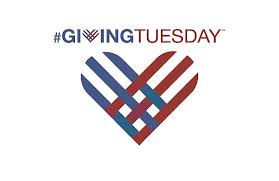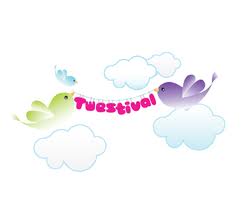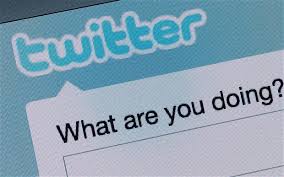 Sorry about not posting something this morning, but I got to my hotel late last night (around midnight) and I was up five hours later for a 6:00 prospect identification/evaluation meeting. My request of Santa this year is more time added to the day and a few more weeks added on to the year. 🙂
Sorry about not posting something this morning, but I got to my hotel late last night (around midnight) and I was up five hours later for a 6:00 prospect identification/evaluation meeting. My request of Santa this year is more time added to the day and a few more weeks added on to the year. 🙂
However, when I got out of my early morning meetings and checked my overflowing email inbox, I was reminded that today is #GivingTuesday. I couldn’t have forgotten it even if I wanted because I had a ton of non-profit emails reminding me. I’m not kidding when I tell you that between my emails, LinkedIn messages, and Twitter and Facebook feeds, I must have received 25 personalized solicitations.
Being sleep deprived and generally a softy when it comes to charitable giving, I decided to make my first ever #GivingTuesday donation. So, I weeded through all of the online solicitations and chose the one that I liked most and aligned with what I support.
Drum roll please? 🙂
Congratulations to United Way of Elgin!
Here is the text/copy of what they sent me in a Constant Contact solicitation:
Today is #GivingTuesday–Let’s ALL Make a Difference Today!
#GivingTuesday is an international movement to honor the spirit of giving during the holiday season. After the craziness of Black Friday and Cyber Monday, #GivingTuesday reminds us that we are part of something bigger, and that everyone plays a part in making our world a better place.
Join United Way of Elgin in celebrating this day dedicated to giving back. You can participate instantly with a $30 gift to the Dolly Parton Imagination Library program, which provides one free book each month to children under five in our community. Over 4,200 children received books through the DPIL in 2014–help us reach even more kids in 2015!
No matter how you choose to be a part of #GivingTuesday, remember that when you reach out a hand to one, you influence the condition of all. THANK YOU!!
I must admit that my charitable gift felt like an “impulse buy” like one I might have made on Black Friday because I obviously wasn’t planning on making this gift.
Hmmmmmm? Black Friday? #GivingTuesday?
I suspect a light just went off above my head.
 Successful #GivingTuesday solicitations probably utilize some of the same strategies that for-profits use to create the conditions for an impulse buy. Now it all makes sense. (I might not be quick, but I usually get there.) 🙂
Successful #GivingTuesday solicitations probably utilize some of the same strategies that for-profits use to create the conditions for an impulse buy. Now it all makes sense. (I might not be quick, but I usually get there.) 🙂
So, here is what I really like about the United Way of Elgin’s #GivingTuesday solicitation:
- It was big and colorful, which captured my attention
- There was a picture that told most of the story
- They asked for a specific dollar amount, which allowed me to not think about it very long.
- It was project focused and very specific
- The case for support was understandable in a few simple sentences
- There were multiple links to the DonateNow page (so if I wasn’t ready to click after seeing the first link there were other opportunities late in the letter)
- The letter was short, sweet and to the point . . . easy to read in a matter of seconds
Haven’t made your #GivingTuesday gift yet? There is still time left! Can’t figure out who to support? Why not click-through and check out United Way of Elgin’s Dolly Parton Imagination Library? It will warm your heart to invest in early childhood education and literacy. It did mine!
Did your organization participate in #GivingTuesday? If so, what worked for you? What didn’t work? Please scroll down and share your thoughts and experiences in the comment box below.
Here’s to your health!
Erik Anderson
Founder & President, The Healthy Non-Profit LLC
www.thehealthynonprofit.com
erik@thehealthynonprofit.com
http://twitter.com/#!/eanderson847
http://www.facebook.com/eanderson847
http://www.linkedin.com/in/erikanderson847

 I’ve been blogging regularly since May 2011, which makes DonorDreams blog three years old next month. As with everything in life, there have been ups and there have been downs with things such as readership, content, and tech issues. I’m sure those of you who know me well, won’t be surprised to read that I tend to obsess over questions such as:
I’ve been blogging regularly since May 2011, which makes DonorDreams blog three years old next month. As with everything in life, there have been ups and there have been downs with things such as readership, content, and tech issues. I’m sure those of you who know me well, won’t be surprised to read that I tend to obsess over questions such as:

 How does Twestival work?
How does Twestival work?
 A few months ago, I had a horrible experience with my favorite airline. Long story short . . . delay, delay, delay, delay, loaded on the plane, equipment malfunction, delay, delay and finally up-up-and-away. A whole day was lost. However, in that catastrophe, I was able to learn something about Twitter and the new age of customer service. In the last few weeks, I’ve been reminded of this experience when two bloggers talked about Twitter. So, I thought I’d we’d look Twitter a little more closely today, especially as it relates to non-profit organizations.
A few months ago, I had a horrible experience with my favorite airline. Long story short . . . delay, delay, delay, delay, loaded on the plane, equipment malfunction, delay, delay and finally up-up-and-away. A whole day was lost. However, in that catastrophe, I was able to learn something about Twitter and the new age of customer service. In the last few weeks, I’ve been reminded of this experience when two bloggers talked about Twitter. So, I thought I’d we’d look Twitter a little more closely today, especially as it relates to non-profit organizations. I am on Twitter every day. I’m not there very long. I’m not a Twitter expert. I’m sure that I am doing lots and lots wrong in the eyes of social media experts. However, I do see lots of content and most of those who I’m following are non-profit organizations.
I am on Twitter every day. I’m not there very long. I’m not a Twitter expert. I’m sure that I am doing lots and lots wrong in the eyes of social media experts. However, I do see lots of content and most of those who I’m following are non-profit organizations. This is a tough question to answer because I suspect it may vary slightly from agency-to-agency. However, some of the better non-profit organizations are tweeting the following:
This is a tough question to answer because I suspect it may vary slightly from agency-to-agency. However, some of the better non-profit organizations are tweeting the following:











 I was recently engaged in an engaging discussion about board development with a great group of non-profit board volunteers. The range of topics in that conversation spanned issues such as prospect identification, evaluation methods, prioritizing prospect lists, cultivating prospects, recruitment process, orientation, recognition, and evaluation. It was one of those conversations that a facilitator loves because everyone was engaged and actively participating. There was an energetic dynamic in the room, and then someone asked a really tough question:
I was recently engaged in an engaging discussion about board development with a great group of non-profit board volunteers. The range of topics in that conversation spanned issues such as prospect identification, evaluation methods, prioritizing prospect lists, cultivating prospects, recruitment process, orientation, recognition, and evaluation. It was one of those conversations that a facilitator loves because everyone was engaged and actively participating. There was an energetic dynamic in the room, and then someone asked a really tough question: For decades (and probably centuries), board development committees have answered this question the old fashion way. They sat down around a table and talked it over. Those committees who were successful had a diversity of people sitting around the table and were able to assess a prospect’s social network in an anecdotal manner. They talked about what they see and hear about the prospect. Here are just some of the things they most likely talked through:
For decades (and probably centuries), board development committees have answered this question the old fashion way. They sat down around a table and talked it over. Those committees who were successful had a diversity of people sitting around the table and were able to assess a prospect’s social network in an anecdotal manner. They talked about what they see and hear about the prospect. Here are just some of the things they most likely talked through: However, there are some “21st Century” tools that your board development committee might want to start using when talking through the issue of a prospect’s network. Consider the following:
However, there are some “21st Century” tools that your board development committee might want to start using when talking through the issue of a prospect’s network. Consider the following:
